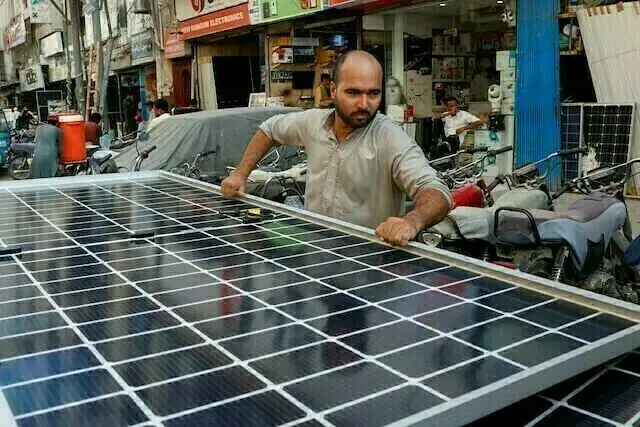Pakistan was experiencing unprecedented solarisation of its energy sector, with solar photovoltaic (PV) panels of 33 gigawatts capacity having already been installed across the country, a press release stated on Thursday.
These views were expressed by the speakers at an event organised by the Policy Research Institute for Equitable Development (PRIED), an independent think tank.
The event was held to launch a study, titled Shouting from the rooftops: Mapping Pakistan’s solar power revolution. The study was a joint production of PRIED and Transition Zero, an energy-transition think-thank based in London.
Speakers at the event stated out that Pakistan’s off grid solarisation had become “an unstoppable phenomenon” though it needs to be channeled into the right direction to increase sustainability, affordability and accessibility of electricity across the country.
They discussed the study’s findings that, while solarisation was having a positive impact in terms of increasing access to electricity, the phenomenon, in many cases, was perpetuating energy inequality and energy poverty across different regions and classes within the country.
China exports more solar panels to Pakistan than to many G20 nations in 5 years: report
They underscored the pressure that solarisation in general, and its net-metering part in particular, was exerting on the national grid and urged the policymakers and government departments concerned to plan and act accordingly.
“While the progress of solar power installations in these two sectors has been nothing short of extraordinary, it still leaves behind the marginalised and poorer sections of the society because they do not have the money to buy and install solar PV panels to meet their electricity needs,” Muqaddas Ashiq, a researcher, said.
Rimsha Rehan, another researcher, presented details of solarisarion in the agricultural and industrial sectors. She pointed out that the solarisation process in the agriculture sector was even “more remarkable” because it was being driven by small farmers, particularly those living in remote off-grid areas.
She explained that off-grid solarisation of large and medium level industries was going on at a rapid pace, creating massive challenges for the national grid to keep itself relevant for this sector.
Manzoor Ahmed Alizai, an energy sector expert, said residential, agricultural, commercial, and industrial consumers had collectively installed solar PV panels with a capacity to produce as much as 33 gigawatts of electricity.
“Pakistan’s import data suggests that it has imported roughly of 50 gigawatts of solar capacity from China the last five years, spending more than $5 billion but not all of this imported capacity has been installed so far,” he said.
“This means a lot of solar PV capacity is still lying in warehouses to be installed.”
Danyal Chaudhry, a member of the National Assembly from the ruling Pakistan Muslim League Nawaz (PMLN), said his party would do whatever it could to help the solarisation process move forward.
“This is why we resisted the imposition of 18% sales tax on the solar panels even when we were under tremendous pressure from the International Monetary Fund (IMF) to impose through the budget,” he told the audience.
Solar energy uptake: CCP set to conduct study to uncover snags
Sher Ali Arbab, MNA, underscored social and regional disparities in the distribution of electricity and called for making the solarisation process as equitable as possible. He also stressed upon the need to “monitor and regulate the quality of solar PV panels being imported and sold in Pakistan so that those wishing to install them do not end up wasting their money on low quality solar equipment.”
He urged the government to provide subsidised solar to those who cannot afford it and arrange “training for solar technicians and installers so that people can get satisfactory installation and post installation services.”
Meanwhile, State Minister for Climate Change Dr Shazra Mansab Ali highlighted three main factors responsible for the solarisation phenomenon in Pakistan: “People, technology and policy.”
“Without a combination of these three, we could not have imagined the kind of solarisation that we are witnessing in Pakistan now,” she said.


